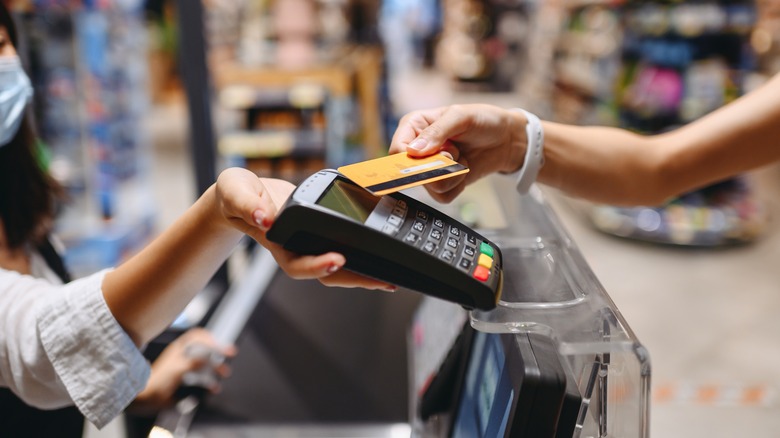The Real Reason In-Store Grocery Shopping Is On The Rise
Whether or not you had used or even heard of apps like Instacart before March 2020, odds are you set up an account and used one during the last two chaotic years of coronavirus variants, safety mandates, and rolling shut downs. Supermarket News reports that nearly 60% of U.S. adults bought groceries online in 2020 and 2021, as opposed to 36.8% in 2019. The sudden boom in online shopping was easily explained: Many stores were encouraging online shopping or curbside pickups in order to ease congestion as workers quit and the fear abounded and customers working from home discovered it was convenient as well as safe. According to TechCrunch, this spike led to 500% growth for Instacart in 2020, stores adapted to accommodate online shopping, and a slew of delivery startups sprouted up. Now, however, the bubble seems to have popped.
According to Morning Consult, spring of 2022 has seen a dramatic shift in customers returning to in-store grocery shopping. While it may seem obvious that the reason for the reversing trend is the relaxing of pandemic restrictions due to readily available vaccines, tests, and treatments, the data did not support that conclusion alone. Morning Consult noted that by October 2021, 80% of American adults said they were comfortable shopping in grocery stores once again, a figure that only raised to 85% by May 2022. Yet, the same study showed that in the same six months, weekly online grocery shopping fell by between 7 and 11% across demographics.
Savings vs convenience
So why have so many people suddenly abandoned this convenient method of shopping? According to Morning Consult, the economy is to blame. Food prices have skyrocketed in recent months, thanks to lingering COVID-related supply-chain issues and Russia's invasion of Ukraine, which has crippled trade in a region responsible for large amounts of food and oil. NBC News reports that food prices have increased 10.8% since last April, while prices in Europe continue to hit record highs (per CNBC).
Morning Consult notes that in a market where consumers are doing their best to save money and shortages of certain products have increased, many shoppers are now more comfortable cutting out the middleman and handling the shopping themselves. Delivery services are pricey. As Healthline explains, Instacart includes a delivery fee starting at $3.99, plus a service fee equal to 5% of your bill if you are not a premium member, while Morning Consult points out Whole Foods' delivery service through Amazon costs a flat rate of $9.95 per order, and those fees come before you tip the delivery driver. Not only does going to the store in-person eliminate those fees, it allows shoppers to price shop more effectively, and make snap decisions when products they're looking for are inevitably unavailable.
While people working from home or worried about their health may still decide the cost is worth the convenience, it is likely that stores will need to readjust once again to prepare for bigger crowds this summer.

